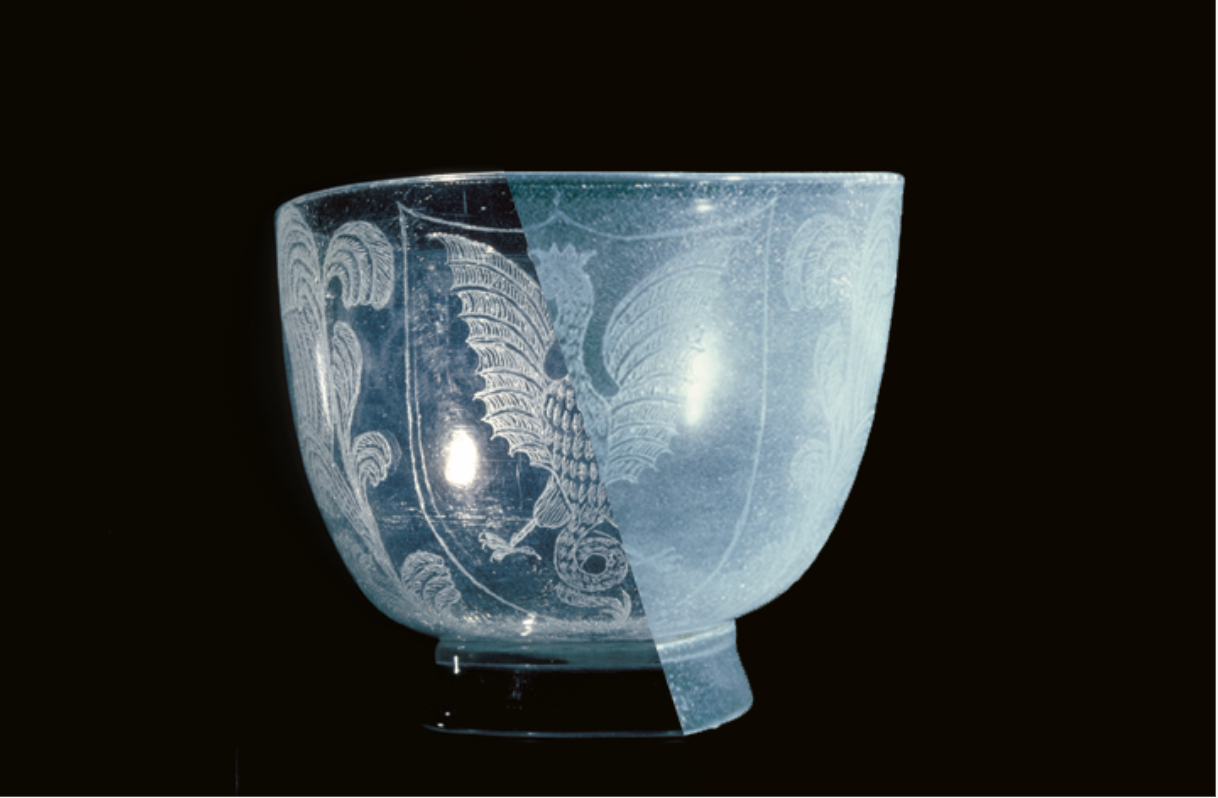Glass degradation project
Conservation scientists investigate unstable glass in museum collections
 Image courtesy of Guus Verhaar (2018), Glass sickness: detection and prevention. Phd dissertation, University of Amsterdam
Image courtesy of Guus Verhaar (2018), Glass sickness: detection and prevention. Phd dissertation, University of Amsterdam
The degradation of glass in museum collections: new conservation insights through scientific analysis
Guus Verhaar*, Amy V. Walker, Norman H. Tennent,
* corresponding author
Abstract
The analytical study of glass objects in museum collections has two main purposes: understanding its past through compositional analysis and safeguarding its future by characterisation of the material condition.
This project focuses on research concerning the deterioration of glass in museum collections but will also present analytical results of relevance to the historical glass-making process. The framework for the research is a 3-year tripartite postdoctoral project instigated by the University of Texas at Dallas and jointly supported by the Rijksmuseum Amsterdam and the Corning Museum of Glass.
Historic and contemporary glass objects of an unstable composition, up to 30% of museum glass items, can exhibit a particularly problematic degradation behaviour leading to the irreversible alteration of their appearance and, ultimately, to the loss of their function as items for museum display. Identifying and predicting the behaviour of unstable glass is therefore of great relevance, as this allows for timely steps to be taken to mitigate the process of degradation. It is equally important to gain a better understanding of the fundamental mechanisms underlying the chemical degradation process. These are the primary goals of the ongoing tripartite project.
The projects outlines the production process and general composition of glass, the degradation which glass of unstable composition undergoes over its lifetime, and the resultant changes in appearance of the glass which occur in the museum environment. The chemical principles of the formation of the disfiguring surface alteration layer will be explained, with the focus on the research being undertaken in the tripartite project to identify unstable glass objects at an early stage. A clearer understanding of the issues of prime concern to museum conservators and curators is developing thanks to the application of several scientific instrumental means of analysis. Amongst these techniques, the lecture will highlight current work involving the use of x-ray photoelectron spectroscopy (XPS) which is leading to new insights on composition of the unstable historic glasses under investigation.
 Crizzled Bowl, George Ravenscroft, Corning Museum of
Glass, ca. 1680
Crizzled Bowl, George Ravenscroft, Corning Museum of
Glass, ca. 1680
Guus Verhaar is a post-doctoral researcher at the Rijksmuseum, Corning Museum of Glass and the University of Texas at Dallas (Edith O’Donnell Institute of Art History). Guus holds a BSc in Physics and Astrophysics (University of Amsterdam), and a Master’s degree and PhD title in Conservation Science (University of Amsterdam). He has been involved with glass degradation studies at the Rijksmuseum since 2012. His main research interest is the application of a range of analytical techniques for the study of the chemical deterioration of glass in museum collections, with the aim of improving the conservation of unstable glass objects.



